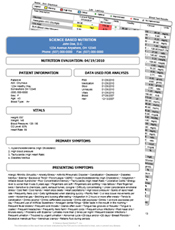We’ve been told for decades that the sun is bad! According to the Mayo Clinic, all forms of skin cancer have been on the rise. The greatest rise has been in melanoma, which is the most serious and most deadly type of skin cancer. Even with our sun-phobic, sunscreen-wearing society, the percentage of people with melanoma has more than doubled over the last 30 years.
So Why Do We Think Melanoma is Caused by Sun Exposure?
Ultraviolet light does damage the DNA in your skin. The rate of melanoma increases significantly when you look at people with lighter skin and who always get sunburned. This group is much more likely to develop melanoma than people with dark skin who never get sunburned.
What is the Evidence that Sun Does NOT Cause Melanoma?
Ultraviolet light increases your vitamin D levels, which has been shown to be a protective factor against more common forms of cancer such as breast and colon cancer. Many melanomas develop in areas with little or no sun exposure such as the buttocks or the bottom of the feet. In addition, studies have not been able to show that wearing sunscreen protects you against melanoma. Finally, there is some evidence that a little sun exposure might actually protect you against melanoma.
In contradiction to the “typical” skin cancer prevention advice, the journal Cancer in March 2002, did an examination of 506 regions and found a close inverse correlation between cancer mortality and levels of ultraviolet B light. The likeliest mechanism for a protective effect of sunlight is vitamin D, which is synthesized by the body in the presence of ultraviolet B.
Sunscreen May Do More Harm than Good
As stated above… studies have not been able to show that wearing sunscreen protects you against melanoma. However, interestingly enough, Octyl methoxycinnamate (OMC), which is present in 90 % of sunscreen brands, was found to kill mouse skin cells even at low doses in a study by Norwegian scientists. Retinyl palmitate was selected by (FDA’s) Center for Food Safety and Applied Nutrition for photo-toxicity and photocarcinogenicity testing based on the increasingly widespread use of this compound in cosmetic retail products for use on sun-exposed skin. This means there was a possibility that it results in cancerous tumors when used on skin exposed to sunlight.
In that yearlong study, tumors and lesions developed up to 21% faster in lab animals coated in a vitamin A-laced cream (retinyl palmitate) than animals treated with a vitamin-free cream.
There are also many other chemicals in sunscreens for which there are concerns of strong estrogenic activity and excretion inhibition which causes many of these chemicals to be stored in fat deposits.
According to the National Institute of Health, sunscreens with a sun protection factor of 8 or greater will block UV rays that produce vitamin D. Along with increased risk of cancer, Vitamin D deficiency is associated with weakened bones, osteoporosis in elderly, post-menopausal women, and individuals on chronic steroid therapy as well as insulin deficiency and insulin resistance, progression of degenerative arthritis of the knee and hip, infertility, PMS, Fatigue and Depression, Auto Immune Disorders, Obesity and Syndrome X.
Here is a list of some chemicals contained in sunscreens that you should avoid:
- Benzophenones (dixoybenzone, oxybenzone)
- PABA and PABA esters (ethyl dihydroxy propyl PAB, glyceryl PABA, p-aminobenzoic acid, padimate-O or octyl dimethyl PABA)
- Cinnamates (cinoxate, ethylhexyl p-methoxycinnamate, octocrylene, octyl methoxycinnamate)
- Salicylates (ethylhexyl salicylate, homosalate, octyl salicylate)
- Digalloyl trioleate, Menthyl anthranilate
- Avobenzone [butyl-methyoxydibenzoylmethane; Parsol 1789]
Whatever your sunscreen choice, we still suggest you use caution in regards to burning the skin. To avoid the burn and protect the skin:
- In the early Spring season, slowly work yourself into exposing your skin to the sun.
- Optimal hours of sun exposure are morning hours until noon and evening hours 3pm to dark.
- Instead of toxic chemical sunscreens, use clothing and hats to shelter your skin when you must be outside for longer periods of time and/or try one of the natural sunscreens recommended by the Environmental Working Group.
- For light skinned people, about 10-20 minutes of exposure is enough to increase you natural vitamin D production. For the darker skinned people, 20-30 minutes may be necessary.
- According to a 2008 issue of Photochemistry and Photobiology, oral supplementation of beta-carotene may protect against sunburn reaction, and the longer the supplementation period the greater the protection. At least 10 weeks of supplementation with a dosage of 25,000IU of beta carotene was required to afford this protection.
- Vitamin E (mixed tocopherols) 400IU/day
- Vitamin C 3000mg/day
- Vitamin D3 (cholecalciferol) 2000-5000IU/day (Get a Vitamin D blood test “25-Hydroxy D” to determine your required dose.)
Should you get burned, we recommend the following regimen to help the skin to heal and repair:
For a couple of days [150lb adult] take Vitamin C (6000 – 10,000mg), E (1200IU), Beta Carotene (100,000 – 150,000IU), EPA/DHA (3000mg), GLA (240mg), drink lots of clean water and apply cool aloe vera gel to the affected area. Most importantly, consume lots of fresh, organic fruits and vegetables in the red, green and orange color groups.
Are you concerned about skin health and want to make sure you’re not missing a key factor? Getting tested is the best way to determine what supplements YOU need and to determine the effectiveness of your brand choice. Set up an appointment today to get control over your health!


